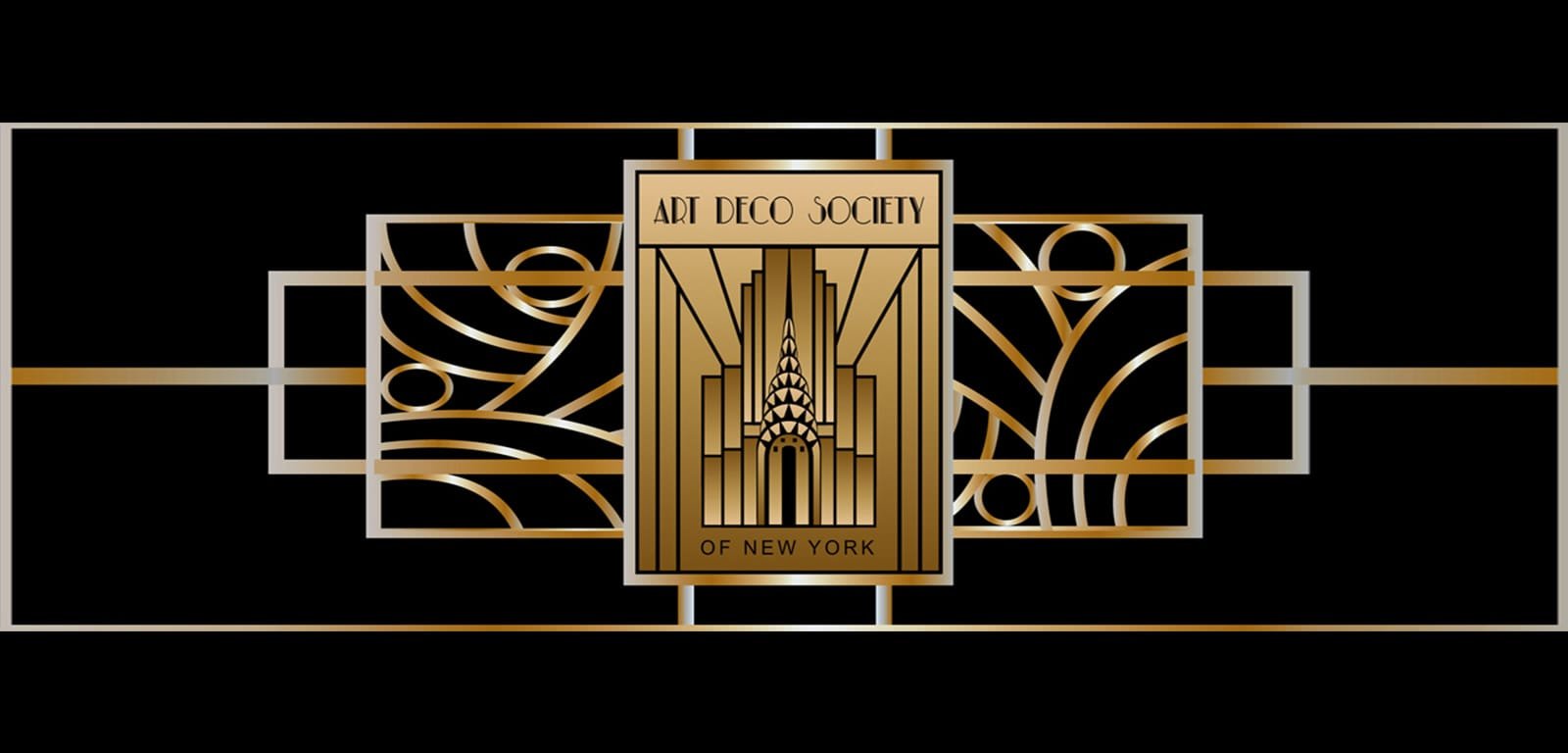Art Deco was the last splendidly self-indulgent decorative style, one described light-heartedly by Brian J. R. Blench in the Spring issue of the Art Deco Society of New York’s newsletter in 1985 as “for luxury and leisure, for comfort and conviviality. It is an exciting style and should, like the archetypal drink of the period, the cocktail, be enjoyed while it is still laughing at you.”
Prior to this, in the Society’s earlier newsletters, inaugurated in September-October, 1980, space was set aside for authorities – academics and enthusiasts alike – to render their definitions of ‘Art Deco’, a continuation, in effect, of the war of semantics waged around the term since it was coined in the mid-1960s.
To this day, opinions are divided between two main camps on the definition as it relates to the modern ornamentation applied to buildings in the inter-war years. Whereas both sides agree that the Art Deco style replaced the standard revivalist Beaux-Arts grammar of ornament of bygone eras – neo-classical motifs such as entablatures, columns, flying buttresses, gargoyles, ogees, and architraves – there remains a lack of consensus on whether it was the highly colourful and playful geometric style which ruled the Paris Salons in the immediate post-WWI years – the chevrons, arcs, sunbursts, maidens, fountains, floral abstractions and ubiquitous biche (doe) – or that of the crisp angular patterns, most with American modernistic impulses, including zig-zag, jazz-age, machine-age, and streamlined aesthetics, to which architects were drawn towards 1930 and to which its supporters believe the Deco label most appropriately applies.
Ultimately, the debate has been inconsequential as neither strain alone encompasses the Art Deco style, one better described as a large and heterogeneous body of artworks whose sole common denominator appears to be its contradictory characteristics, a common currency for a range of early 20th century decorative styles that includes disparate influences ranging from the ancient past to the distant future – from King Tut to Buck Rogers and beyond – plus those inspired by the functionalist mass-produced materials of the 1930s, which began to phase out the terracotta and stone age in architecture, as it had already done to traditional materials in the decorative arts.
Modern man’s imagination was stirred now by the enormous tensile strength and brilliant sheen of steel, technology’s newest building aid. In addition, as one considers the issue of Deco terminology today, one must accept that the genie has long since escaped the bottle, so it makes no sense now not to use the term for designs that have been identified as such in countless publications and exhibitions. In short, Art Deco is a pastiche of styles, one that, when romance and nostalgia are thrown into the mix, provides an infectious energy and ‘snap’ that resonates beyond its diehard fans to the public at large.
Parallel to America’s widespread fascination with the architecture of the 1920/30s has been the revival of interest by connoisseurs and collectors of the period’s decorative arts from around 1970, the moment when many works emerged from their original homes. Ranging from the unrivalled cabinetry of the Parisian ebenistes of the mid-1920s to the American chromed metal and Bakelite bric-a-brac of a decade later, a frenzied pursuit of the Deco movement’s signature pieces now exists in the marketplace, notably for masterworks in furniture by the likes of Ruhlmann, Dunand, Gray and Rateau.
For these, prices have risen exponentially into the 7-figures, with no ceiling seemingly in sight, which is remarkable when one considers that these works do not yet strictly qualify as ‘antique’, the 100-year gauge by which the art market has traditionally determined if an object has an established value as a collectible. The auction in 2006 of a private Art Deco collection staged by Christies at the Grand Palais in Paris generated a total of 50 million Euros ($63.5 million), with 12 works each exceeding the million Euro mark, far surpassing in value any sale in memory of comparable 18th or 19th century artworks. Then, three years later in an auction at the same venue, a ‘Dragon’ armchair by Gray from the estate of Yves Saint Laurent was hammered down for an astonishing 20 million Euros. Clearly, the Art Deco collector market now commands our attention.
In summary, one can recall the Associate Supreme Court Justice, Potter Stewart, who, when asked for his definition of the term ‘pornography’, gave the pithy answer: “I know it when I see it”. And so it is for the devotees of Art Deco: they know it when they see it in its many guises, and nowhere are they more blessed in this than in the metropolis of Gotham, where they can both soak up the embarrassment of riches in the surface ornamentation that adorns the soaring terraced facades of the interwar cathedrals of commerce that dominate its skyline and, below, in its auction rooms, the feverish, at times giddy, competition for the era’s treasured artworks. A win-win for the city’s residents, visitors, and for the members of the Art Deco Society of New York.
About the Author:
Alastair Duncan is a world authority on Art Deco. Among his many books are Art Deco Complete: The Definitive Guide to the Decorative Arts of the 1920s and 1930s, Art Deco Furniture: The French Designers, American Art Deco, Art Deco and Modernism: Modernist Design 1880-1940.

